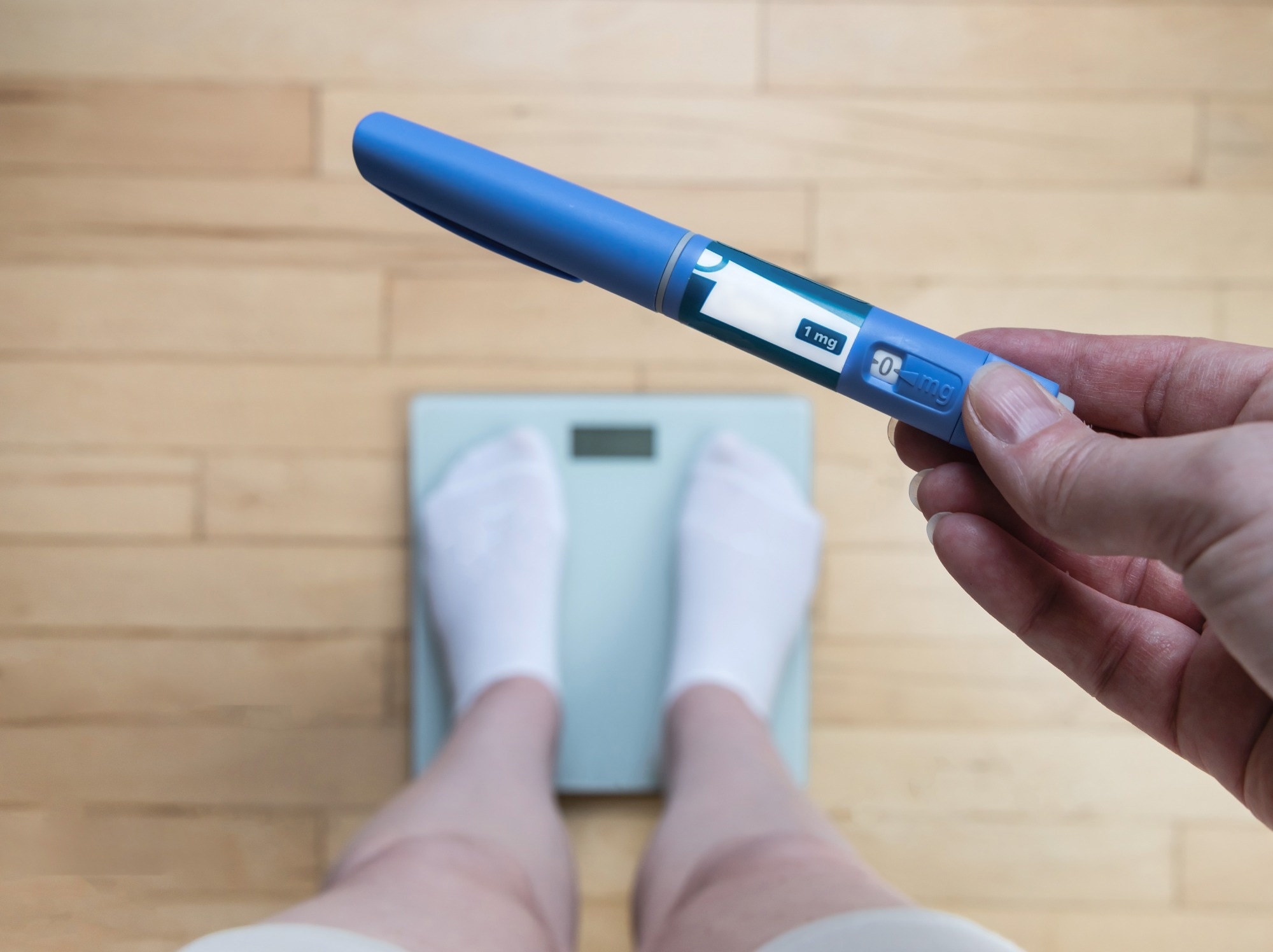An international trial reveals that a 7.2 mg dose of semaglutide drives greater weight loss than the standard 2.4 mg, but raises questions about side effect trade-offs in obesity treatment.
 Study: Once-weekly semaglutide 7·2 mg in adults with obesity (STEP UP): a randomised, controlled, phase 3b trial. Image credit: Caroline Ruda/Shutterstock.com
Study: Once-weekly semaglutide 7·2 mg in adults with obesity (STEP UP): a randomised, controlled, phase 3b trial. Image credit: Caroline Ruda/Shutterstock.com
Semaglutide, a drug initially developed for managing diabetes, is also widely prescribed for weight loss. It has been approved for doses of 2.4 mg, but it fails to induce adequate weight loss in some people. A new phase 3b trial published in The Lancet examines its use at a higher dose, 7.2 mg, in obese adults.
Introduction
Semaglutide is one of the synthetic glucagon-like peptide-1 receptor agonists (GLP-1 RAs) that mimics the actions of the natural incretin hormone, GLP-1. Beyond its effects on glucose, the striking weight loss associated with the GLP-1 RAs has promoted the use among obese and overweight individuals for weight management. However, there is little data on its safety and efficacy at higher doses. The current trial sought to provide evidence in this area.
About the study
The STEP UP trial was a phase 3b randomized controlled three-arm trial. Both the placebo and the active drug (semaglutide at a lower dose) were used as controls. The study occurred across 11 countries and only included participants whose body mass index was above the threshold for obesity but who did not have diabetes. All participants had lifestyle modification protocols. The trial was conducted over 72 weeks.
Participants were randomized to one of three groups in a ratio of 5:1:1. The first and second groups received 7.2 mg and 2.4 mg semaglutide subcutaneously once a week, respectively. The third group received a placebo.
The researchers compared the mean percentage change in body weight with 7.2 mg semaglutide vs placebo. They also assessed the proportion of people in each group who hit the goal of losing 5% or more of their body weight over the study period.
They assessed the proportion of people in each group who lost 10% or more, 15% or more, 20% or more, or 25% or more, comparing semaglutide vs placebo. The proportions of people who reduced body weight by 20% or more and 25% or more were compared between the two semaglutide groups.
Study findings
While 1,407 participants took part in the trial, 1,005 received the 7.2 mg dose, 201 received the 2.4 mg dose, and 201 were on the placebo. Most of the participants on 7.2 mg semaglutide were female, with a mean age of 47 years. The mean body weight was 113 kg, and the BMI was ~40 kg/m2.
The 7.2 mg semaglutide group had a greater mean weight loss than the 2.4 mg group, at -18.7% vs -15.6%, respectively. The estimated treatment difference between the groups was -3.1%, favoring the higher dose of semaglutide. The mean weight loss in the placebo group was -3.9%, with an estimated treatment difference of -14.8% in favor of semaglutide 7.2 mg.
Greater weight loss
The semaglutide 7.2 mg group was more likely to reduce 5% of their body weight or more, the odds being over 12 times greater (odds ratio 12.1) compared to placebo. The odds ratios for weight loss of 10%, 15%, and 20% or more ranged from 14.5 to 27.3, indicating a substantially higher likelihood of achieving these goals than placebo. At this dosage, the odds of losing 25% or more of the body weight were 127 times greater (OR 127.4).
Compared with the 2.4 mg semaglutide dose, the higher dose was associated with greater odds of marked weight loss. Thus, the odds of losing 20% or more, or 25% or more, of body weight were about twofold higher at 7.2 mg.
Semaglutide 7.2 mg was also associated with lowering the waist circumference compared to placebo.
Adverse effects
However, digestive tract symptoms were more common at this higher dose than at the lower dose or placebo, reported in 71% of the high-dose group and 61% of the lower-dose group. Meanwhile, 43% of the placebo group had similar adverse effects.
Changes in sensation were also more frequently reported by 23% in the high-dose group, vs 6% in the low-dose group. Less than 1% had symptoms in the placebo group.
Serious side effects were reported in 6.8% of the high-dose group, 10.9% of the lower-dose group, and 5.5% of the placebo group, indicating broadly similar rates across groups. Still, the higher overall frequency of gastrointestinal and sensory side effects at 7.2 mg suggests a trade-off between efficacy and tolerability.
Download your PDF copy now!
Conclusions
Semaglutide 7·2 mg was superior to placebo and 2·4 mg for bodyweight reduction in adults with obesity, while retaining a favourable risk–benefit profile.
The authors emphasize that further validation is required before these findings can be generalized to wider clinical use.